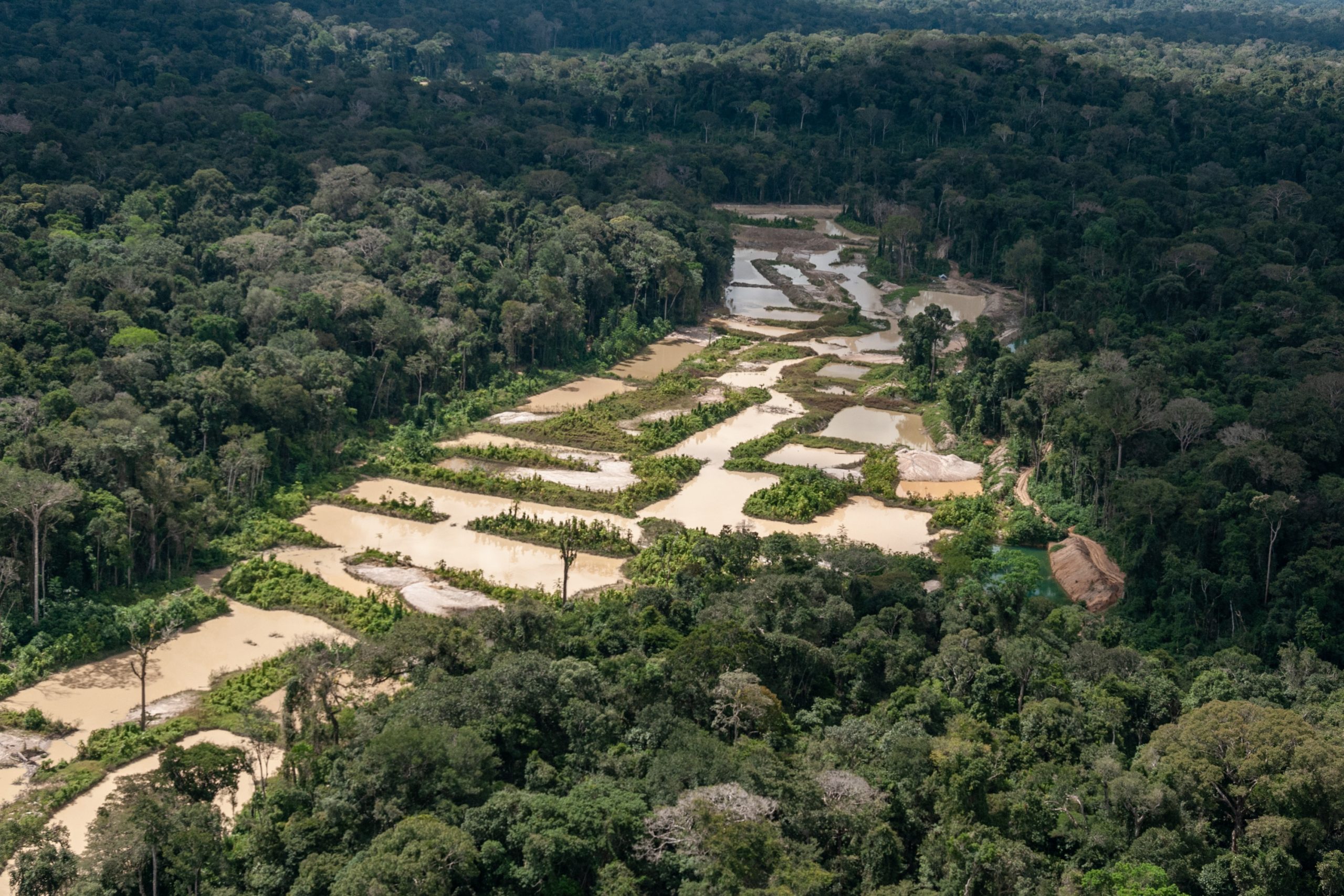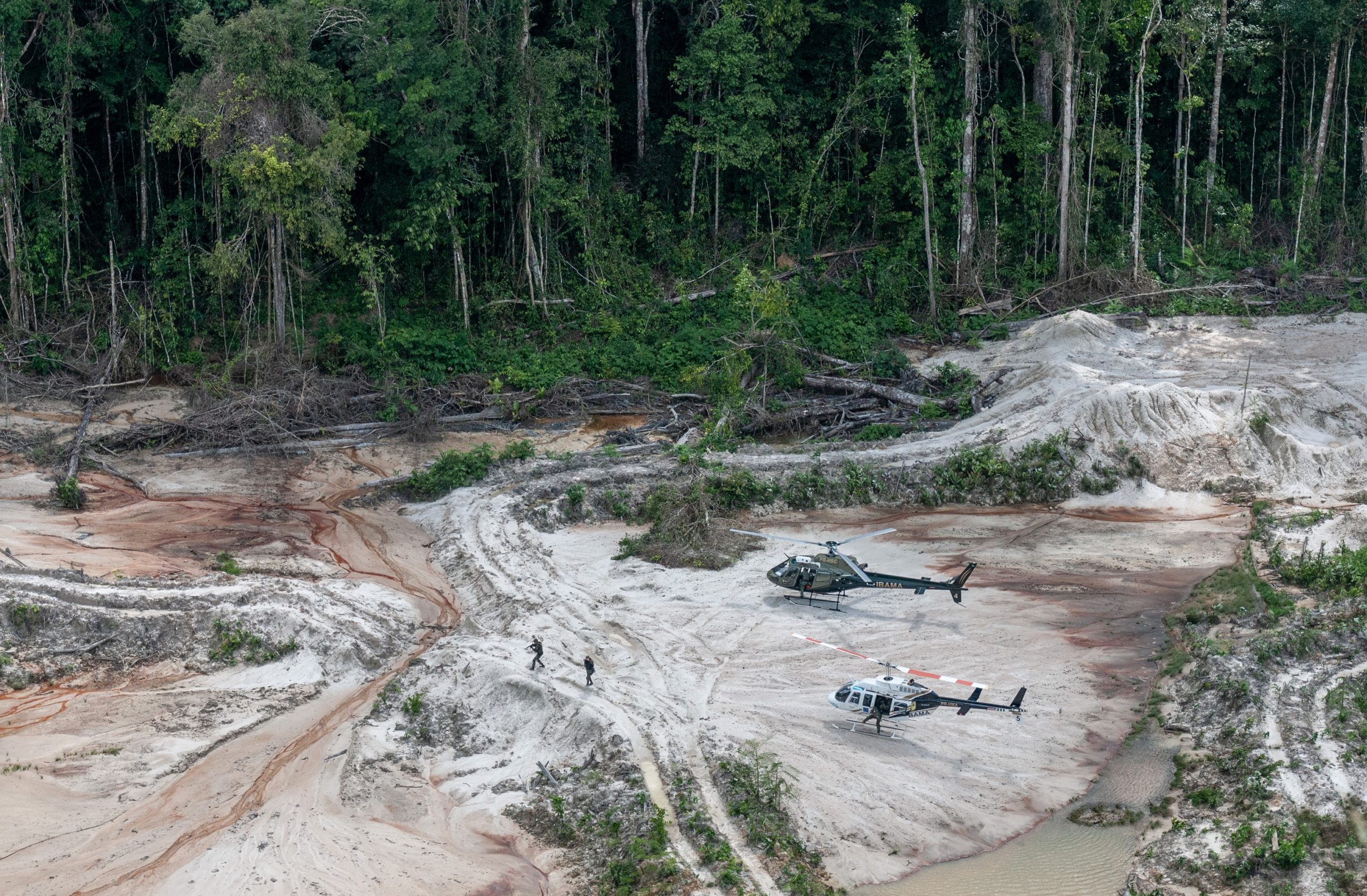Jorge Bodanzky is a filmmaker who is currently working on a film about the effects of garimpo [informal, small-scale mining] in the Amazon entitled The Amazon: a new Minamata? One of his main subjects in the film is Erik Jennings, a neurosurgeon at the public hospital in Santarém, in the Amazonian state of Pará. Jennings works for SESAI, Brazil’s dedicated Indigenous health agency, and has worked extensively amongst Indigenous communities in the Tapajós river basin.
Editor’s note
This piece is an extract from The Heart of Our Earth: Community resistance to mining in Latin America, by Tom Gatehouse. Available 24 March via Practical Action Publishing. US$37.95 / £24.95.
“Dr Erik and his colleagues were worried by the significant increase in the number of requests for wheelchairs for schoolchildren in the area. These were children who were suffering from neurological problems and issues with their movement and coordination,” says Bodanzky. “There were also signs of a very high rate of failure in the schools, students being held back and having issues with their studies, way above the average rate for the region.”
Jennings’ hypothesis? Mercury poisoning.
Mercury – one of ten chemicals identified as a major public health concern by the World Health Organization – has been used for centuries as an inexpensive way of refining gold. It is indestructible and can be carried for hundreds of miles by water and wind, meaning that once released into the environment it is almost impossible to contain.
In garimpo mercury works like a magnet, binding with the gold particles and making them easier to separate from the surrounding ore. This amalgam is then washed to separate any remaining waste, which is then dumped in the river. The Brazilian Federal Police estimate that garimpeiros throw around 7 million tonnes of sediment into the Rio Tapajós per year, much of which contains mercury.

To extract the gold, the garimpeiros typically burn off the mercury from the amalgam. The vapours released partially condense in the clouds and are then washed into water sources by the rain, where the action of methylating bacteria turns the mercury into methylmercury, a powerful neurotoxin which bio-accumulates in fish and bio-magnifies up the food chain. On top of this, the soil in the Amazon is naturally high in inorganic mercury. Though this presents no risk to human health when the soil is undisturbed, garimpo – along with other human interventions which remove forest, such as cattle ranching – causes erosion, sending this soil into the water, where again, the mercury becomes methylmercury.
Methylmercury attacks the central nervous system, causing symptoms such as memory loss, lethargy, and problems with concentration – symptoms which can be mild at first and are often misdiagnosed. Eventually – in some cases years later – more serious complications may develop: tremors, poor hearing and speech, severe cognitive impairment; in the most extreme cases, paralysis, coma, and death. The damage is irreversible.
It can also cross the placenta, having severe toxic effects on the brain and nervous system during embryonic development. Unborn babies are particularly susceptible to methylmercury and may be affected even if the mother displays no signs of poisoning.
Bodanzky’s film draws a parallel with the Minamata Disaster in Japan, when thousands of people were poisoned after consuming fish and shellfish contaminated with mercury from the Minamata Bay. A factory owned by the Chisso Corporation was identified as the culprit – it dumped wastewater in the bay for decades, continuing to do so even after the link between its pollution and the so-called “Minamata disease” had been established.
“Everything that happened in Minamata has started happening in the Amazon,” says Bodanzky. “On a different scale, but we can see what might happen if nothing is done about it.”
‘They’re killing us’
The problem is particularly acute in the communities which live along the rivers, including the Munduruku, one of Brazil’s largest Indigenous groups. In recent years, they have come under increasing pressure from a range of different sectors, including illegal loggers, land grabbers, agribusiness, and hydroelectricity generation.
However, garimpo – which has been a threat to the Munduruku intermittently since the 1970s – exploded during Jair Bolsonaro’s presidency [2019–2022]. Research by the Instituto Socioambiental found that the area of the Munduruku Indigenous Territory degraded by garimpo increased 363% between January 2019 and May 2021. The impact on the Rio Tapajós – on which the Munduruku depend for fishing, feeding livestock, bathing, and transportation – has been especially devastating.

“We know that we’re sick, that we’ve got levels of mercury in our bodies. But this is the only source of food we have,” says leader Alessandra Korap Munduruku. “We can’t stop eating fish because it’s contaminated with mercury. If we did, we would all starve because we depend on the river, we depend on the fish for our survival.”
The level of mercury intoxication amongst the Munduruku surpassed even the worst expectations of Erik Jennings and his team, who have been monitoring the situation closely in recent years.
“Our research [involving 109 residents of the Alto Tapajós region] shows that 99% of the population tested have levels of mercury in their blood which surpass the threshold considered safe by the World Health Organization,” Jennings told Repórter Brasil. “Some of them are 15 times over the limit. It’s extremely worrying.”
“There has to be some punishment, because they’re killing us,” says Alessandra Munduruku. “There can be no question about whether garimpo will have an impact; it already has done. The fish are dying from the contamination. The women are being poisoned. Now we’ve got proof.”
In late 2020, Jennings attempted to return to the villages of the Alto Tapajós with Bodanzky’s producer and cameraman to conduct the handover of these results with the Munduruku. However, when their plane stopped to refuel in Jacareacanga, one of the towns bordering the Indigenous territory, they were attacked by a group of pro-garimpo Indigenous people.
“They thought that our guys were from Greenpeace and a big argument broke out, it got quite ugly,” explains Bodanzky. “One of the Indigenous women started to paint them red – a sign of war. Our producer Juliana got all covered in red and they were really scared about what might happen.”
Jennings and the team escaped, managing to restart the plane and take off amid a hail of stones. Miraculously, no-one was hurt.
